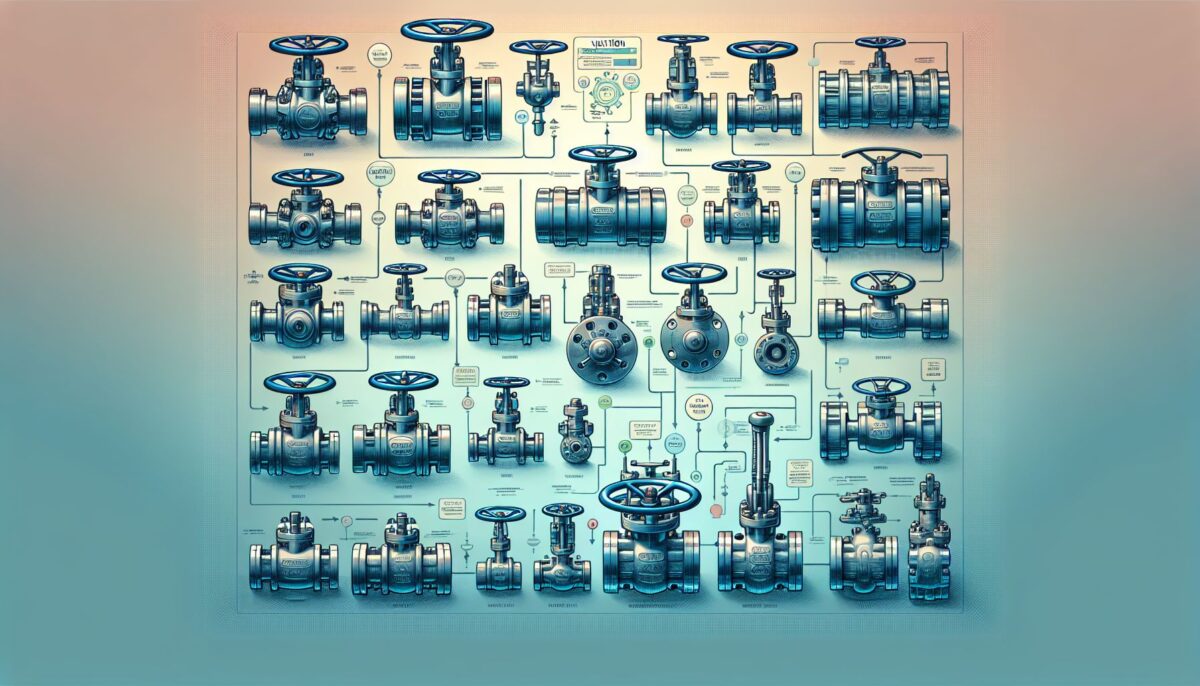Valve selection is a critical process in any piping and instrumentation design. It encompasses not just the choice between ball, gate, or butterfly designs but the careful consideration of application constraints, material compatibility, pressure and temperature ratings, and maintenance requirements. With the right approach, the selected valves can improve system efficiency, ensure safety, and minimize the need for frequent repair or replacement. In this article, we’ll walk you through the intricate process of valve selection.
Understanding Your System Requirements
Application Analysis
The first step in valve selection is to understand the environment in which the valve will operate. Consider the type of media (liquid, gas, slurry), temperature, pressure, and whether the system will require throttling, pressure relief, or simply on/off control. Different industries will have different standards and requirements that can significantly influence the choice of valve type and material.
Flow Characteristics
Understanding the flow characteristics within a system is key. Will the valve be used for starting/stopping flow, regulating flow, or protecting equipment against backflows or overpressure conditions? The valve’s Cv (flow coefficient) will be an important factor in ensuring that the system operates within designed parameters without causing excessive drop in pressure or energy loss.
Chemical Compatibility
The material of the valve must be compatible with the media it will be in contact with. Corrosive fluids may require valves made from specialized alloys or plastics, which can resist deterioration over time.
Pressure and Temperature Ratings
Different valves come with different pressure and temperature ratings. It’s crucial to select a valve that can handle the maximum expected system pressure and temperature without risk of failure.
Industry Standards and Regulations
Compliance with industry standards and regulations is non-negotiable. Whether it’s API, ASME, ISO, or local codes, ensure that the selected valve meets all relevant standards for performance, safety, and environmental impact.
Types of Valves
Ball Valves
Ball valves are known for providing tight sealing and are suitable for applications requiring on/off control without pressure drop. They’re commonly used for gas or liquid services where quick and easy operation is required.
Gate Valves
Gate valves are utilized for applications where a straight flow and minimum restriction is desired. These are typically seen in on/off services, especially where the valve has to remain either fully open or closed for extended periods.
Globe Valves
Globe valves excel in applications where throttling or regulating flow is necessary. They offer better control of flow but usually result in a higher pressure drop than other types of valves.
Check Valves
Check valves, or non-return valves, are designed to prevent backflow. They automatically close to stop fluids from moving in the wrong direction, thus protecting equipment downstream.
Butterfly Valves
These valves are suitable for both on/off and throttling services, especially for large-diameter pipes. Their compact design and quick operation make them favorable in many applications.
Others
There are numerous other valve types, each suited for specific applications – diaphragm valves for sanitary processes, knife gate valves for slurry services, pinch valves for highly abrasive or corrosive fluids, and solenoid valves for automated control systems are just a few examples.
Material Selection
Metallic Valves
Metals like stainless steel, cast iron, and bronze are common in valve construction. They offer robustness and can be used in a wide range of temperatures and pressures. Special alloys are available for severe services.
Non-Metallic Valves
Plastic and elastomeric materials are often chosen for their resistance to corrosion. They are lighter and sometimes more cost-effective but usually cannot withstand the same levels of pressure and temperature as metallic valves.
Seal and Seat Materials
The materials used in the seals and seats of a valve are crucial, as they directly contact the process media. PTFE is a common seat material that offers excellent chemical resistance, while graphite seals can withstand high temperatures.
Valve Sizing and Actuation
Sizing for Optimal Performance
Accurate sizing of valves is paramount for efficient system performance. An undersized valve can cause excessive velocity and pressure drop, while an oversized valve may not control the flow properly.
Manual or Automated Actuation
Decide if the valve will be manually operated or automated. Factors like remote location, or when precise control is required, may necessitate automated valves with actuators and control systems.
Maintenance Considerations
Ease of maintenance should not be overlooked when selecting a valve. Some valve designs are inherently easier to maintain and repair than others, potentially leading to reduced downtime in the event of a failure.
Case Studies and Examples
Practical examples can provide insight into the valve selection process:
Food and Beverage Industry
In this industry, hygiene is crucial. Diaphragm or ball valves with a high hygienic design standard may be preferred.
Oil and Gas Industry
For high-pressure applications or sour services (hydrogen sulfide environments), materials like Duplex or Inconel, and valve types like ball or gate valves, might be selected for their strength and corrosion resistance.
Water Treatment and Distribution
Butterfly or globe valves may be used for regulating flow, while check valves are essential for preventing backflow.
Power Generation
High-pressure steam applications might require globe valves with pressure seal bonnets and trim materials suitable for the temperatures involved.
Conclusion
Valve selection is a multifaceted process that requires understanding various aspects of both the valve and the system it will serve. Proper valve selection can save money, enhance safety, and increase the lifespan of the valve and the system. Always consult with experts, such as engineers and valve manufacturers, to ensure that the valve you choose aligns with both the application’s demands and industry best practices. With careful consideration and expert advice, the right valve can provide reliable performance for years to come.
